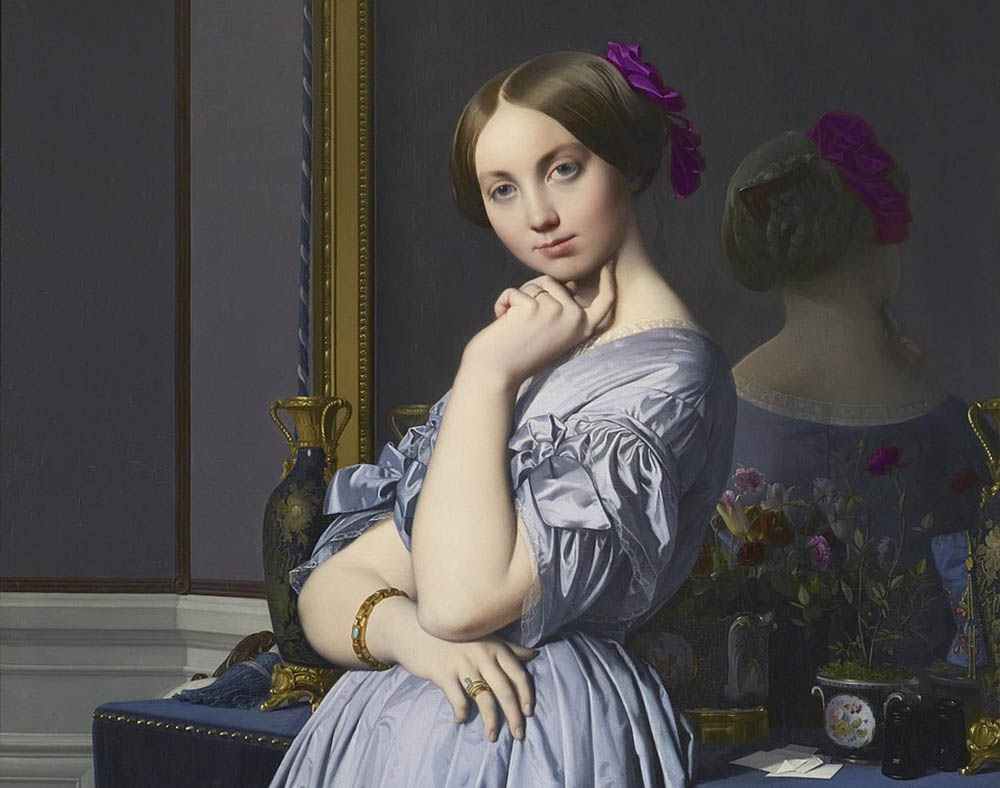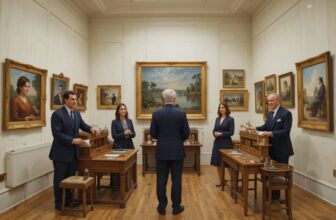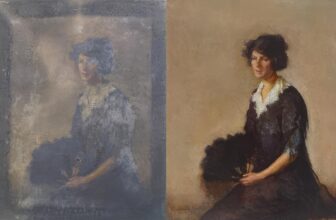
The Secrets of Collecting Antique Oil Paintings Masterpieces
A Complete Guide for Art Lovers and Investors
Art collecting has always held a magnetic appeal for both passionate enthusiasts and savvy investors. From Renaissance oil paintings to contemporary digital art, collecting timeless masterpieces is not just about ownership, it’s about preserving cultural heritage, making smart financial decisions, and experiencing the emotional joy of living with beauty.
But what exactly makes a piece of art a timeless masterpiece? And how do collectors, whether beginners or seasoned connoisseurs, navigate this complex yet rewarding world?
This in-depth guide will unlock the secrets of art collecting, offering you a roadmap to build a collection that is both personally meaningful and financially valuable.
Why Collecting Art Matters
Collecting art goes far beyond decoration. For centuries, collectors have influenced the direction of art history, from the Medici family commissioning Renaissance works to modern institutions acquiring cutting-edge digital installations.
Cultural Preservation
Every piece of art tells a story of its time, creator, and society. Collectors play a crucial role in preserving these narratives for future generations.
Financial Potential
While passion often drives collecting, art has also become one of the most stable alternative investments. Certain artworks appreciate significantly in value, sometimes outperforming stocks or real estate.
Emotional Connection
Living with art can inspire daily joy, reflection, and intellectual stimulation. Collectors often describe their artworks as “companions” that enrich their lives.
What Defines a Timeless Masterpiece?
Not every work of art achieves the status of a masterpiece. Collectors who seek timelessness need to recognize certain attributes.
1. Historical Significance
A masterpiece often embodies an important moment in history or a turning point in an artist’s career. For example, Picasso’s Les Demoiselles d’Avignon reshaped modern art by breaking traditional perspective.
2. Rarity and Uniqueness
Limited availability increases value. Original works, rare prints, or pieces from an artist’s breakthrough period typically attract higher demand.
3. Provenance and Authenticity
Provenance, the documented history of ownership, is essential in establishing authenticity. Works with impeccable provenance carry prestige and trustworthiness.
4. Aesthetic and Emotional Impact
A timeless masterpiece resonates across generations. It stirs emotions, challenges perceptions, or captivates the eye in ways that never feel outdated.
5. Enduring Market Demand
Some artists, such as Rembrandt, Van Gogh, Monet, or Basquiat, maintain lasting demand because of their influence and legacy.
Step-by-Step Guide to Collecting Timeless Masterpieces
Whether you’re a beginner or an experienced buyer, following a structured approach helps avoid costly mistakes.
Step 1: Define Your Purpose
Ask yourself: Are you collecting for love, investment, or both? A passion-driven collection often evolves differently from an investment-focused one.
Passion-driven collectors prioritize personal taste and emotional connection.
Investment-focused collectors emphasize potential resale value, market trends, and artist trajectories.
Step 2: Research the Art World
Immersion is key. Read art history books, attend exhibitions, visit galleries, and subscribe to reputable art magazines. Online platforms like Artsy, Artnet, and Christie’s Insights provide valuable resources.
Step 3: Build Relationships with Experts
Cultivate connections with art dealers, curators, and advisors. These professionals can help you identify opportunities, avoid fakes, and navigate auctions.
Step 4: Start Small and Focused
Instead of attempting to buy the “next Mona Lisa,” begin with a niche that resonates with you. Collect works from a particular movement, medium, or region. Focus creates coherence and strengthens your collection’s narrative.
Step 5: Prioritize Provenance and Documentation
Always verify authenticity with certificates, expert opinions, and provenance records. A masterpiece without documentation risks becoming a liability.
Step 6: Learn the Art of Bidding at Auctions
Auctions are thrilling but intimidating. Research estimates, set a budget, and know when to stop bidding. Prestigious auction houses like Sotheby’s and Christie’s are transparent, but secondary markets may require caution.
They are often seen as the ultimate stage for acquiring masterpieces, where history, prestige, and adrenaline collide. But while exhilarating, auctions can be overwhelming for beginners. Understanding the rules, psychology, and strategies of bidding is critical to making informed decisions and avoiding costly mistakes.
Understand the Auction Process
Before raising your paddle, familiarize yourself with how auctions work. Major houses like Christie’s, Sotheby’s, and Phillips release detailed catalogs in advance, featuring artwork descriptions, provenance, and estimated price ranges. Preview exhibitions are also organized so potential buyers can inspect works in person. Attending these previews—even without the intention to buy—can sharpen your eye for quality and detail.
Set a Strict Budget
One of the biggest mistakes novice bidders make is getting caught up in the excitement of the moment. Auctioneers are skilled at creating urgency, and competition in the room can quickly drive prices far beyond initial estimates. Always set a maximum bid beforehand and stick to it. Many seasoned collectors recommend writing your ceiling number down and refusing to exceed it, no matter the pressure.
Know the Hidden Costs
The hammer price (the winning bid) isn’t the full amount you’ll pay. Auction houses charge a buyer’s premium, which can range from 15% to 25% of the final bid, plus taxes, shipping, and insurance. Factor these into your calculations so you aren’t blindsided later.
Explore Different Types of Auctions
Not all auctions are equal. Prestigious evening sales attract global attention and sky-high bids, but day sales, online auctions, and regional houses often offer more affordable opportunities. For beginners, smaller auctions provide an excellent learning ground.
Learn the Bidding Strategies
Bidding can be both tactical and psychological:
Early Bidding: Placing a strong early bid can signal confidence and deter weaker competitors.
Wait-and-See Approach: Some bidders wait until the final moments to strike, hoping to avoid unnecessary competition.
Proxy Bidding: Many auction houses allow you to leave a maximum bid with a representative, ensuring you stay disciplined and don’t overspend in the heat of the moment.
Attend as an Observer
If you’re new to auctions, attend several sessions without bidding. Observing firsthand will help you understand the pace, gestures, and tactics at play. You’ll notice how seasoned collectors behave—calm, patient, and rarely impulsive.
Build Relationships with Specialists
Auction house specialists can be invaluable allies. They provide insight into estimates, artist reputations, and market trends. By cultivating trust with these professionals, you may gain early access to private sales or guidance on under-the-radar works.
Ultimately, auctions should be approached with both excitement and caution. For many collectors, winning a masterpiece in a competitive auction is a memorable milestone. But the true art lies not just in securing the piece—it’s in knowing you did so wisely, strategically, and without regret.
Step 7: Protect and Preserve Your Collection
Owning art is also about stewardship. Invest in proper storage, climate control, insurance, and restoration when necessary. Neglecting preservation can erode both aesthetic and financial value.
Step 8: Think Long-Term
Timeless masterpieces appreciate with patience. Avoid impulse purchases; instead, build gradually with strategic acquisitions.
The Role of Art Market Trends
To truly master collecting, you need awareness of evolving trends.
Old Masters vs. Contemporary Art
Old Masters (pre-1800 works) carry stability and historical weight. Contemporary art, however, often drives faster appreciation due to cultural relevance. Many collectors balance both categories.
The Rise of Digital and NFT Art
The digital revolution has expanded collecting into new frontiers. NFTs (non-fungible tokens) represent ownership of digital assets, sparking debates but also opening opportunities for forward-thinking collectors.
Globalization of Art Markets
No longer confined to Western centers like New York or Paris, art markets thrive in Asia, the Middle East, and Africa. This diversification has broadened perspectives and investment potential.
Secrets of the Most Successful Collectors
What separates average collectors from those who amass iconic collections?
Vision and Patience
Great collectors often develop a long-term vision, sometimes waiting years to acquire specific works.
Courage to Take Risks
Some masterpieces were acquired when artists were underappreciated. Visionaries who recognized their brilliance early reaped rewards later.
Balancing Passion and Strategy
Successful collectors combine emotional connection with market insight, ensuring collections hold personal and financial meaning.
Networking and Access
Many rare works never reach public markets. Collectors with strong networks gain access to private sales, exclusive previews, and insider opportunities.
Challenges in Collecting Timeless Masterpieces
While rewarding, art collecting has pitfalls.
Forgeries and Fakes
The art market is plagued with counterfeits. Advanced authentication methods, including forensic analysis, are increasingly important.
Market Volatility
Though art can appreciate, values fluctuate based on trends, economic shifts, and cultural changes.
Accessibility and Cost
Masterpieces by household names often sell for millions, making them unattainable for most. However, emerging artists or overlooked movements still offer opportunities.
Ethical Considerations
Questions about stolen artifacts, colonial looting, or illegal trade highlight the need for ethical collecting. Buyers must ensure acquisitions respect cultural heritage and legal frameworks.
How to Spot Future Masterpieces
Collecting timeless works also involves anticipating which emerging artists will achieve lasting recognition.
Innovation and Originality – Artists who push boundaries are more likely to leave a mark.
Critical Acclaim – Recognition from curators, critics, and institutions signals potential longevity.
Exhibition Record – Museum exhibitions and prestigious gallery representation suggest credibility.
Cultural Relevance – Art that resonates with contemporary issues may endure historically.
Consistency of Quality – Artists who maintain high standards across their careers inspire collector confidence.
The Psychology of Collecting
Why do people feel compelled to collect masterpieces?
Identity and Status: Collections often reflect personal identity or social standing.
Sense of Legacy: Many collectors view themselves as guardians of cultural heritage.
Emotional Reward: The thrill of acquisition and the joy of ownership create lasting satisfaction.
Community Belonging: Collectors connect with like-minded individuals through events, societies, and clubs.
The Intersection of Technology and Collecting
The digital age has reshaped collecting in profound ways.
Online Auctions and Platforms
Websites allow collectors to bid globally from their homes. Transparency, convenience, and accessibility attract new demographics.
Blockchain and Provenance
Blockchain technology ensures tamper-proof provenance, reducing risks of forgery and dispute.
Virtual Reality and Digital Galleries
Collectors can now curate virtual exhibitions, sharing their collections worldwide without logistical constraints.
Building a Legacy Collection
A timeless collection transcends its owner. Collectors often consider legacy planning:
Donations to Museums – Many masterpieces eventually enter public institutions.
Family Inheritance – Collections can be passed down as financial and cultural assets.
Private Foundations – Some collectors establish foundations to ensure preservation and access.
Practical Tips for Beginner Collectors
Educate Yourself Continuously – Knowledge is your greatest asset.
Visit Art Fairs – Events like Art Basel or Frieze provide exposure to global art.
Start with Prints and Drawings – More affordable entry points into the art world.
Keep Detailed Records – Maintain invoices, certificates, and insurance documents.
Trust Your Instincts – While research is key, art should also speak to your heart.
Case Studies of Iconic Collections
The Peggy Guggenheim Collection
Peggy Guggenheim recognized the brilliance of artists like Jackson Pollock and Max Ernst early on. Her vision created one of the most influential modern art collections in the world.
The Barnes Foundation
Dr. Albert C. Barnes curated a revolutionary collection of Impressionist and early modern art, emphasizing education and accessibility.
Eli Broad’s Collection
Eli Broad combined business acumen with passion, building a collection that now resides in The Broad museum in Los Angeles.
These collectors reveal how vision, passion, and risk-taking can shape timeless legacies.
The Journey of a Collector
Collecting timeless masterpieces is not just about financial gain or cultural prestige, it’s about embarking on a lifelong journey. Each artwork acquired represents a chapter in your story, a dialogue with history, and a gift to the future.
Whether you’re drawn to Old Masters, contemporary innovators, or digital pioneers, the secrets of collecting lie in education, patience, authenticity, and passion. Build a collection that not only appreciates in value but also enriches your soul and contributes to the tapestry of human creativity.




